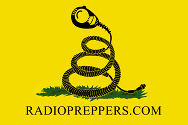Keep in mind, though, that use of the WL2K system still leaves you at the mercy of outside people to keep their systems up and running. If an event is big enough to require wide-spread bugging-out it is possibly also big enough to disrupt WL2K access, at least regionally.
It seems to me HF peer-to-peer operation of AirMail or RMSExpress should be considered as a way to avoid depending on anyone else's infrastructure. WL2K is great for backup email or training purposes, but I see peer-to-peer as the real value for preppers - and, if you can do WL2K, it requires nothing additional other than some prior coordination.
Wally
It seems to me HF peer-to-peer operation of AirMail or RMSExpress should be considered as a way to avoid depending on anyone else's infrastructure. WL2K is great for backup email or training purposes, but I see peer-to-peer as the real value for preppers - and, if you can do WL2K, it requires nothing additional other than some prior coordination.
Wally
